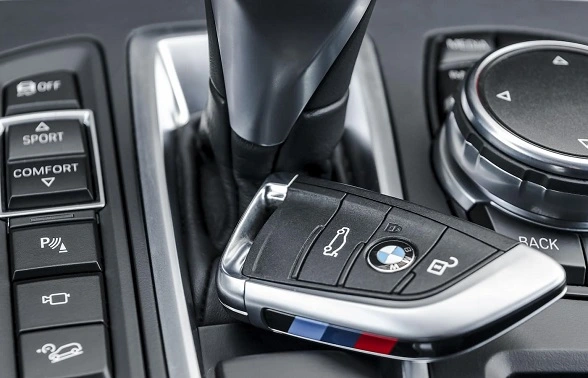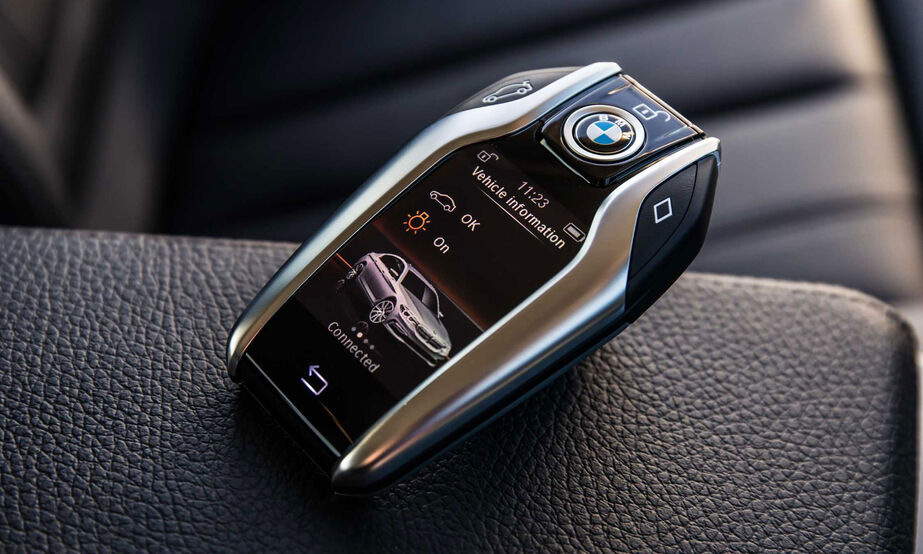Is your BMW key fob acting up—taking longer to unlock your doors or showing a warning on your dashboard? These are common signs that the battery in your key fob needs replacing. Luckily, replacing a BMW key battery is simple and can be done at home in just a few minutes.
This complete guide will walk you through step-by-step instructions for replacing the battery in all BMW key models, including Smart Keys, Comfort Access Keys, and traditional key fobs.
Tools You’ll Need
Before you begin, gather the following tools and materials:
- Replacement battery (typically CR2032, CR2450, or CR2025 depending on your model)
- Small flathead screwdriver or coin
- Tweezers or small pliers (optional)
- Soft cloth for cleaning
Tip: Always check your BMW owner’s manual or the back of your key fob to confirm the correct battery type.
Identifying Your BMW Key Type
BMW key fobs vary slightly by model and year. Here’s how to tell which one you have:
| Key Type | Battery Type | Design |
| Smart Key | CR2450 | Oval shape with side buttons |
| Comfort Access Key | CR2032 | Rectangular with front buttons |
| Older Models (e.g., E38, E39, M3, Z4) | CR2025 | Traditional rectangular key shell |
Want to know more, visit our website…
How to Replace Your BMW Key Battery (Step-by-Step)
Step 1: Remove the Mechanical Key (If Applicable)
Flip the key over and press the release button to slide out the mechanical backup key. This gives you access to the battery compartment.
Step 2: Open the Key Fob Case
Locate the seam or indentation along the side of the key fob. Insert a flathead screwdriver or a coin and gently twist to pry the two halves apart. Be careful not to damage the casing.
Step 3: Remove the Old Battery
Use the screwdriver or tweezers to carefully lift out the old battery. Avoid touching the contacts and remember the battery’s orientation (positive [+] side up or down).
Step 4: Insert the New Battery
Insert the new battery with the correct polarity. The positive side usually faces up. Press it gently into place, making sure it’s snug and secure.
Step 5: Close the Key Fob
Align both halves of the key shell and press them back together until you hear a click. Make sure the case is tightly closed to maintain water and dust resistance.
Step 6: Test the Key Fob
Stand near your vehicle and press all buttons to ensure they respond correctly. You can also insert the key into the ignition or use push-to-start to confirm functionality.

Troubleshooting Common Issues
If your key fob still isn’t working after replacing the battery, try the following:
- Double-check the battery is the correct type and inserted with the right polarity.
- Ensure the battery contacts are clean and not corroded.
- Try another new battery—it’s possible the first one was defective.
- If issues persist, the key fob might have an internal issue. Consider contacting a BMW dealer or professional auto locksmith.
How Often Should You Replace the Battery?
Battery life depends on usage, but here’s a general guideline:
- Smart Key: Replace every 2–3 years.
- Comfort Access Key: Replace every 1–2 years.
- Replace sooner if you notice reduced range or intermittent function.
Key Fob Maintenance Tips
- Keep it dry: Moisture can damage internal electronics.
- Avoid drops: Physical impact can misalign internal components.
- Clean regularly: Wipe with a dry cloth to remove dirt and oil.
- Store safely: Keep your key in a cool, dry place away from extreme temperatures.
Where to Buy BMW Key Batteries
You can find replacement batteries at:
- Auto parts stores
- Electronics retailers
- Supermarkets with battery sections
- Online (Amazon, eBay, etc.)
Just be sure to purchase genuine, high-quality lithium batteries to avoid performance issues.
Frequently Asked Questions
What type of battery does my BMW key use?
Most use CR2032 or CR2450, but some older models may use CR2025. Always confirm your specific model.
Can I replace the BMW key battery myself?
Yes! It’s a simple DIY task that takes less than 10 minutes and only basic tools.
What if the key still doesn’t work after battery replacement?
Check battery orientation, try a second new battery, and clean the contacts. If it’s still unresponsive, professional help may be needed.
How do I dispose of the old battery?
Take used batteries to a recycling center, auto shop, or electronics store that accepts battery disposals.

Want to get the maximum lifespan from your BMW key battery? These maintenance tips can help extend battery life by up to 30%, according to BMW’s own engineering data:
Optimal Storage Practices
Where and how you store your BMW key actually matters! Keep your spare keys:
- Away from extreme temperatures
- Not stacked directly on top of each other (keys can “talk” to each other and drain batteries)
- At least 5 feet from your vehicle when not in use (prevents the key from constantly communicating with the car)
Weather Effects on Battery Performance
Did you know that climate dramatically affects your key battery life? A 2023 study in Automotive Technology Today revealed that:
- Keys in cold climates (below 32°F regularly) experienced 15-20% shorter battery life
- Hot climate users (above 90°F regularly) saw 10-12% reduction in battery performance
- Humidity above 80% contributed to faster internal corrosion
Early Warning System
Develop a habit of noticing these early warnings that can save you from being stranded:
- If your BMW key works perfectly at 30 feet away, then suddenly requires being within 15 feet, replace the battery
- If one button (typically the trunk release) stops working before others, it’s battery replacement time
- Set calendar reminders every 2 years as a preventative measure
Ever wondered why your BMW key battery seems to die at the most inconvenient times? That’s because increased usage (like repeatedly hitting the lock button to find your car in a parking lot) dramatically accelerates battery drain during its final 10% of life.
Cost Comparison: DIY vs. Dealership
Let’s talk dollars and cents. How much are you really saving by doing this yourself?
DIY Replacement Costs
- Standard CR2032 battery: $2-5 for name brand, $1-3 for generic
- CR2450N for display keys: $8-12
- Multi-pack option: $10-15 for a 5-pack of CR2032 batteries (perfect for multi-BMW households)
Dealership Service Costs
- Battery + labor: $50-75 for standard keys at most dealerships
- Display key service: $85-150 depending on location
- Emergency service charge: Some dealerships charge premium rates ($100+) for same-day emergency service
According to a 2024 survey by Luxury Auto Consumer Reports, BMW dealerships mark up key batteries by an average of 400% compared to retail prices. Factor in your time and travel to the dealership, and DIY becomes even more attractive.
When Dealership Service Makes Sense
Sometimes paying the professionals is worth it:
- If your key has additional damage beyond battery issues
- If you own a very new BMW model with complex security features
- If you have physical limitations that make small parts difficult to handle
- If your time is simply worth more than the cost difference
A recent press release from BMW North America noted that approximately 35% of owners still prefer dealer service for key maintenance despite the cost difference, citing convenience and peace of mind as primary factors.
Frequently Asked Questions About BMW Key Battery Replacement
Still have questions? You’re not alone. Here are the most common questions we receive about BMW key battery replacement:
How often should I replace my BMW key battery?
Most BMW key batteries need replacement every 2-4 years, though usage patterns dramatically affect this timeframe. Heavy users (those who press buttons frequently or have multiple daily lock/unlock cycles) might need replacement as often as every 18 months.
Can I drive if my key battery is dead?
Yes! Even with a dead battery, your physical key can still unlock the door manually, and most BMWs have a specific spot in the center console or dashboard where you can place the dead key fob to start the engine. Check your owner’s manual for your model’s specific emergency start procedure.
Will I need to reprogram my key after changing the battery?
In most cases, no. BMW’s advanced key technology retains programming even through battery changes. About 97% of standard keys require no reprogramming after battery replacement, according to BMW service statistics.
Is there a specific battery brand BMW recommends?
While BMW doesn’t officially endorse specific brands, their service centers typically use Panasonic or Varta batteries. Their technical documentation suggests avoiding the cheapest generic options, as inconsistent power delivery can damage sensitive key electronics over time.
Can I replace the battery in my waterproof BMW key?
Yes, but with extra caution. If your BMW key is advertised as waterproof (common in newer X models and convertibles), be careful not to damage the rubber gasket that creates the waterproof seal. A damaged seal cannot be repaired—only replaced.
Final Thoughts
Replacing your BMW key battery is an easy yet essential part of vehicle maintenance. Whether you drive a sporty M Series or a luxurious 7 Series, this guide ensures you stay connected to your car with a fully functional key fob.
By following these instructions, you’ll save time, avoid unnecessary dealer fees, and ensure your BMW stays accessible and ready to drive.






